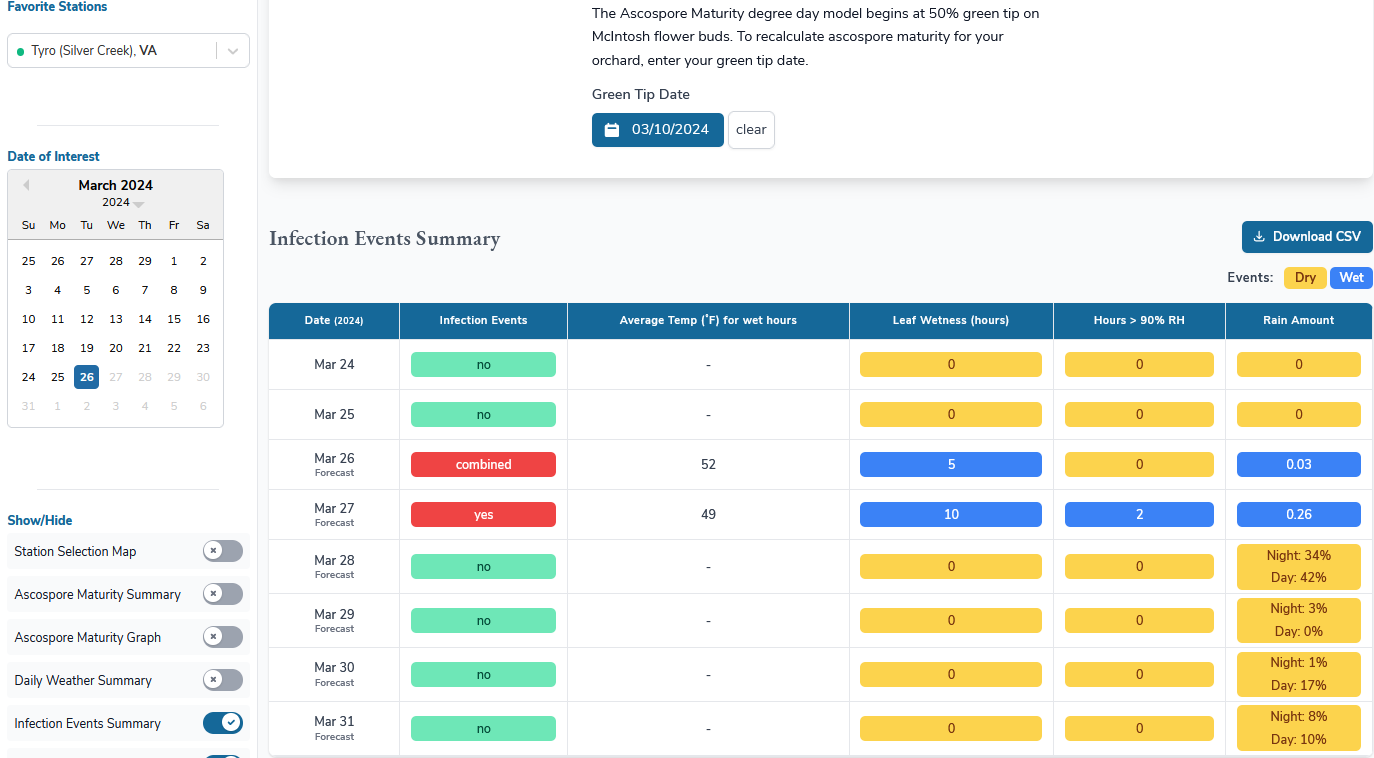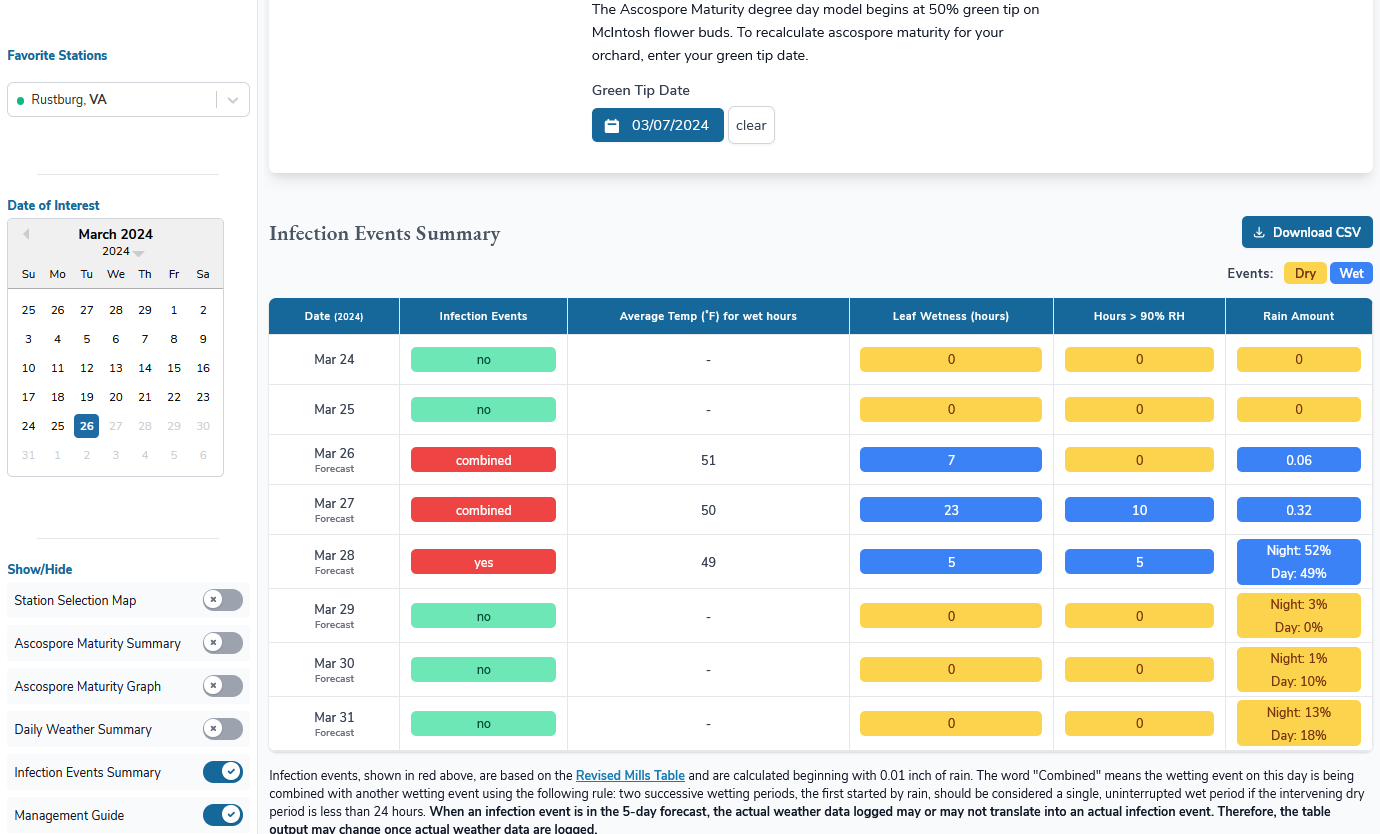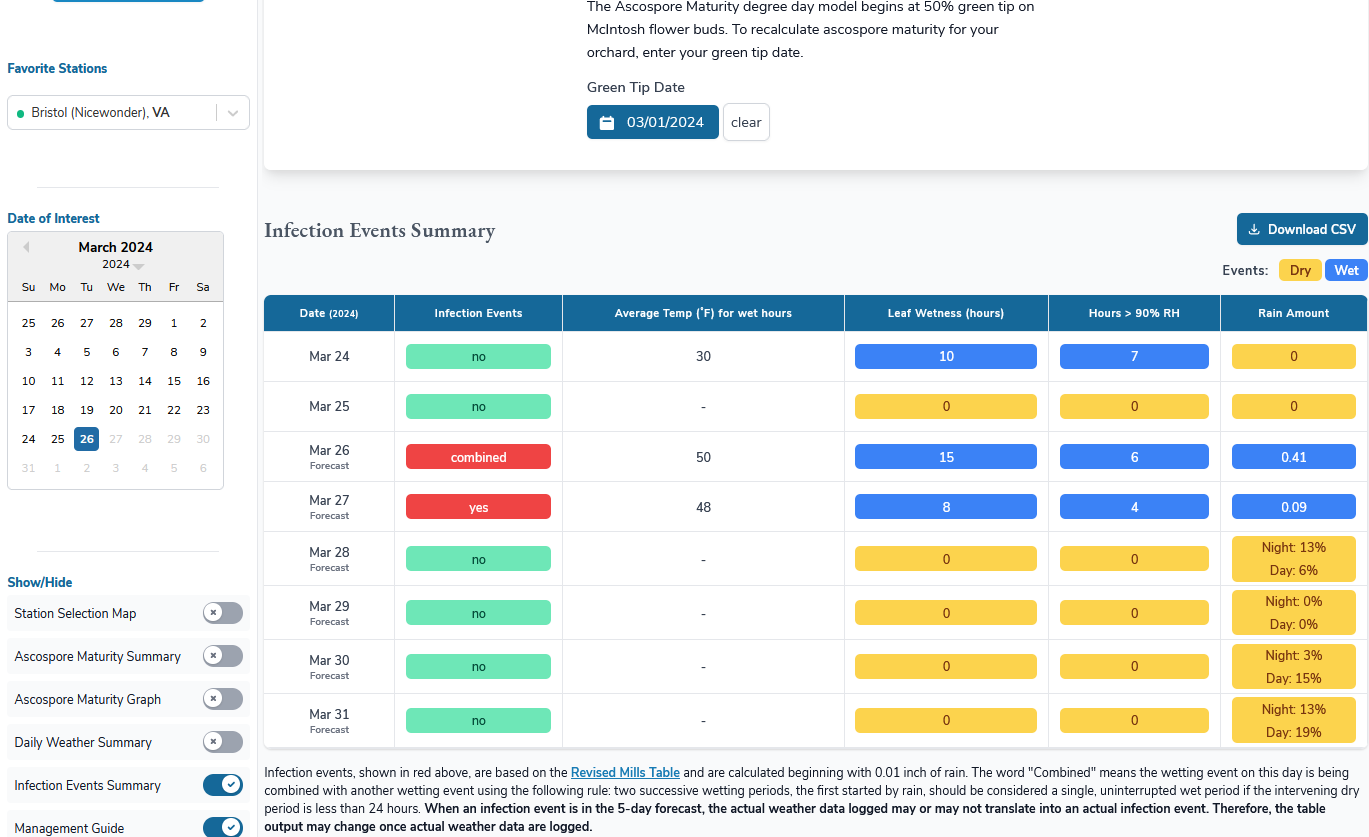Scab Infections Possible in Southern VA But It is Too Cold for Scab Infections In South-Central, Central and North VA
Last week, winter came back in Northern Virginia slowed down the bud development. It has been cold for apple scab infections so far in central and northern VA. However, with the rains of 26-27 March strong infections from apple scab fungus are possible in Bristol and Cana VA, and other locations in southern VA, on early apple cultivars with exposed green tissue susceptible to this disease. There is a prediction that 28% ascopsores will release with rains 26-27 March. We are transitioning from Tight Cluster (TC) to Pink Bud (PB) in southern VA, or are even in Pink Bud already. In central VA we are transitioning from TC to Pink Bud (Fuji, Gala). Weak apple scab infection is possible in Rustburg and Tyro VA with the rains 26-27 March because low infection spore release is predicted (16% in Rustburg, 9% in Tyro), but if you did not see scab symptoms in your orchard last year, these infections are not worth applying fungicide for as it is too cold for spores to infect leaves. RIMpro model can indicate to you whether the predicted infection will go over 100 RIM (Relative Infection Measure) value or not. If RIM value for a wetting event is above 100, it is warrantying fungicide application in orchards that had visible scab last year. If you do not want to use RIMpro for which you have to pay subscription, the Apple Scab model in NEWA is the model you can access for free here: https://newa.cornell.edu/apple-scab and by finding and using the closest station to your farm you can see the predicted infections. so no infections from scab and rust at this cold weather are predicted by the model.
In scab clean orchards from last year, at this moment rain events for 26-27 March are not warrantying a single-site fungicide application(s), except in southern VA, and you will be unnecessarily spending money on fungicides. Even in southern VA, I would recommend using only mancozeb 3 lbs/A. When we see a future serious infection prediction in the model(s), then for the next fungicide application I would recommend would be Vangard, Scala, or Luna Tranquility tank mixed with mancozeb 3 lbs/A. Then you can repeat this mix once more, 5-7 days after. In spring, keep your spray interval at 5 to 7 days from the previous spray application. Stay tuned as we monitor both NEWA and RIMpro scab models. We were not able to set up now RIMpro in Central and South-Central VA as previous subscribers decided not to renew subscription. However, RIMpro model already functions in Virginia locations like Timberville, Quicksburg, Winchester and Cross Junction, and Westfield in North Carolina). As the leaf mass starts to increase, keep in mind that besides the temperature and hours of leaf wetness, the amount of green tissue surface present at the time of infection on your trees, will be important for fungicide residue dilution, and thus the effectiveness against scab infections. The more leaf tissue expands the higher the risk for infections will be as the gaps open in the residue you delivered. If you had apple scab symptoms last year in your orchard, you should count that you have high levels of carry-over apple scab fungus inoculum from the infections the previous year. Here are the outputs from NEWA on 26 March for Bristol and Tyro (infections predicted 26-27 March, Source: https://newa.cornell.edu/apple-scab):



